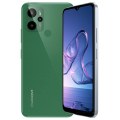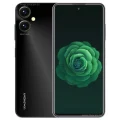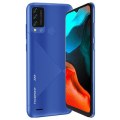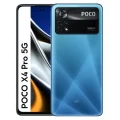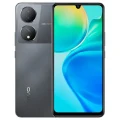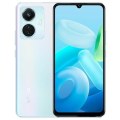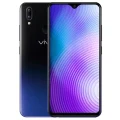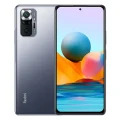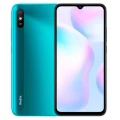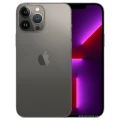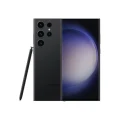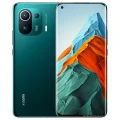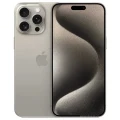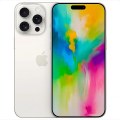- Awesome page
- Latest Mobile
- Smartphones
- Symphony Z40
Symphony Z40
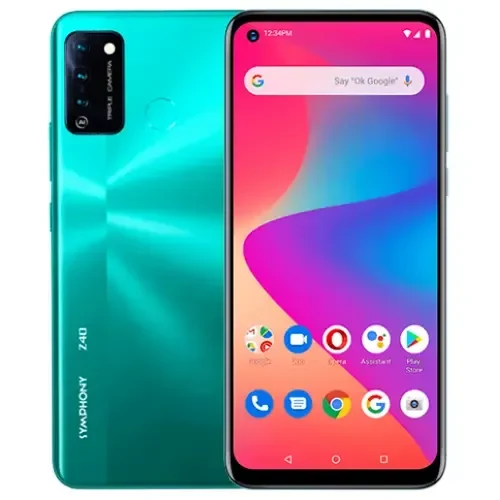


Symphony Z40 Price in Bangladesh
The Symphony Z40 is priced at BDT 9,990 in Bangladesh. It comes with a single variant: 32GB storage and 3GB RAM. The device is equipped with a 5000mAh battery (no fast charging), runs on Android 10, and features an unknown chipset.
Specifications
General
| Model | Symphony Z40 |
| Status | Available |
| Official price | 3GB 32GB ৳9,990 / 4GB 64GB ৳10190 |
Design
| Dimensions | 165 x 76.6 x 8.9 mm |
| Weight | 193.5 g |
| Colors |
Dazzling Blue, Delightful Green, Jolly Blue |
Network
| Technology | GSM / HSPA / LTE |
| 2G Network |
GSM 850 / 900 / 1800 / 1900 - SIM 1 & SIM 2 |
| 3G Network |
HSDPA 850 / 900 / 2100 |
| 4G Network |
LTE |
| GPRS <strong>GPRS</strong> (General Packet Radio Service) is a packet oriented mobile data service on the 2G and 3G cellular communication system's global system for mobile communications (GSM), Generally, GPRS is used for the purpose of wireless data transfer, such as sharing pictures and videos or browsing the Internet via a mobile phone connection. | |
| EDGE <strong>EDGE</strong> (Enhanced Data GSM Environment) is a wireless network technology generally considered the next step in the 2G network offers data transfer rates up to four times faster than ordinary GSM networks, Generally, EDGE is used for the purpose of wireless data transfer, such as sharing pictures and videos or browsing the Internet via a mobile phone connection. | |
| Speed | HSPA+, LTE |
Display
| Display Type <strong>Display Technology => </strong> A number of display technologies and types used in mobile phones => TFT (Thin Film Transistor), IPS (In-Place Switching), OLED (Organic Light Emitting Diode), AMOLED (Active-Matrix Organic Light-Emitting Diode), Super AMOLED (an even advanced version of AMOLED), Resistive Touchscreen (Resistive touchscreens contain two layer of conductive material with a very small gap between them which acts as a resistance), Capacitive Touchsceen (Capacitive touchscreen technology consists of a layer of glass coated with a transparent conductor) | IPS LCD capacitive touchscreen, 16.7M colors |
| Size | 6.55 inches |
| Resolution | 720 x 1600 pixels |
Camera
Main camera
| Camera Setup | Triple |
| Primary <strong>Camera</strong> is able to capture photographs and usually videos, The most important characteristics of a camera are the resolution (measured in megapixels), lens focus type (fixed or automatic), higher megapixel cameras are known to capture higher quality photos, but not always a good measurement of the photos quality. |
13 MP 2 MP 5 MP |
| Features |
AI, Portrait Mode, Wide Angle, Night Mode, Panorama, Slow-mo, Face beauty, HDR, Flash light, Display Flash, Anti-shake, Self- |
| Video | 480@30fps, 720@30fps, |
Selfie camera
| Camera Setup | Single |
| Primary <strong>Camera</strong> is able to capture photographs and usually videos, The most important characteristics of a camera are the resolution (measured in megapixels), lens focus type (fixed or automatic), higher megapixel cameras are known to capture higher quality photos, but not always a good measurement of the photos quality. |
13 MP |
| Features |
timer, ZSD, Grid Line, Finger capture |
| Video | 1080p@30fps |
Hardware
| RAM (Memory) <strong>RAM</strong> (Random Access Memory) is a type of computer memory that can be accessed randomly, any byte of memory can be accessed without touching the preceding bytes that allows information to be stored and accessed quickly from random locations. RAM is the most common type of memory found in computer systems, smartphones, tablets and other electronic devices. | 3 GB |
| Internal Storage <strong>Internal Storage</strong> is a data storage space (flash memory) mostly used in smartphones, tablets and other electronic devices where operating system, apps, music, photos, videos, files and other user data Is stored. | 32 GB |
| Sensors <strong>Sensors</strong> are electronic components that detects and responds to some type of input from the physical environment. The specific input could be light, heat, motion, moisture, pressure and location, The output is generally a signal that is converted to use in computing systems, a location sensor, such as a GPS receiver is able to detect current location of your electronic device. |
Fingerprint (rear-mounted) Face Unlock, Notification Sensor Light, Proximity, Sensor Accelerometer |
Connectivity
| Bluetooth <strong>Bluetooth</strong> is a wireless communications technology for exchanging data between mobile phones, headsets, computers and other network devices over short distances without wires, Bluetooth technology was primarily designed to support simple wireless networking of personal consumer devices. | Yes |
| Infrared <strong>Infrared</strong> connectivity is an old wireless technology used to connect two electronic devices. It uses a beam of infrared light to transmit information and so requires direct line of sight and operates only at close range. | |
| USB | miceoUSB 2.0 |
| GPS <strong>GPS</strong> The Global Positioning System is a satellite-based radio navigation system, GPS permits users to determine their position, velocity and the time 24 hours a day, in all weather, anywhere in the world, In order to locate your position, your device or GPS receiver must have a clear view of the sky. | Yes, with A-GPS |
| NFC <strong>NFC</strong> (Near field communication) is a set of standards for smartphones and similar devices to establish peer-to-peer radio communications with each other by touching them together or bringing them into proximity, usually no more than a few inches. |
Battery
| Battery Type <strong>Battery Type => </strong> Cell phones run on various kinds of batteries depending on the manufacturer, phone size or shape and features. There are basically four types of cell phone batteries => Lithium Polymer, Lithium Ion, Nickel Metal Hydride and Nickel Cadmium. | Non-Removable Li-Po |
| Capacity <strong>Battery Capacity</strong> is a measure (typically in Amp-hr) of the charge stored by the battery, and is determined by the mass of active material contained in the battery. The battery capacity represents the maximum amount of energy that can be extracted from the battery under certain conditions. | 5000 mAh |
Symphony Z40 Review: Is This the Best Budget Smartphone Under 10,000 Taka?
Looking for a smartphone that doesn’t break the bank yet delivers all the essential features you need? Enter the Symphony Z40, a budget-friendly device priced at just 9,990 Taka in Bangladesh. This smartphone is aimed at users who want reliable performance and a decent set of features without overspending. But does it live up to expectations? Here’s an in-depth review of the Symphony Z40 to help you decide if it’s the right choice for you.
A Smartphone Built for Budget Shoppers
Symphony has long been known for producing affordable smartphones targeting budget-conscious users, and the Symphony Z40 continues that tradition. Running on Android 10, the Z40 is aimed at casual users who need basic features for day-to-day tasks like browsing, messaging, and light gaming. But how does it perform when you dig a little deeper? Let’s find out by analyzing its design, performance, cameras, and more.
Design and Build Quality
First impressions often matter, and the Symphony Z40 tries to fit the bill with its sleek design and lightweight feel. While the device primarily uses plastic materials, it still manages to look modern with its minimalistic design. The rounded edges and compact build make it comfortable to hold, even for extended periods.
However, the lack of premium materials is noticeable, especially compared to higher-end phones. At this price point, though, the Z40 delivers what you’d expect—functional and sturdy enough for everyday use without feeling overly cheap.
Key Design Highlights:
- Material: Plastic with a matte finish to resist fingerprints.
- Weight: Lightweight and comfortable to carry.
- Ports: Standard micro-USB port (no USB-C support) and a headphone jack.
The design may not turn heads, but it does what it needs to—focus on utility rather than flair.
Display and Audio
A significant part of any smartphone experience is the display, and the Symphony Z40 comes with a modest screen that gets the job done for casual use. The display is bright enough for indoor use but struggles under direct sunlight.
Display Details:
- Screen Size: 6.5 inches
- Resolution: HD+ (720 x 1600 pixels)
- Panel Type: IPS LCD
When it comes to multimedia, the Z40 offers a passable audio experience. The single speaker located on the back is loud enough for calls and casual video watching but doesn’t deliver the depth or clarity of more premium devices. Music enthusiasts might prefer a good pair of headphones.
Performance and Battery Life
Under the hood, Symphony Z40 is equipped with 3GB RAM and an unknown chipset. While the exact processor isn’t specified, this device is clearly designed for light users—it handles basic applications and multitasking well but starts to show limitations when running more demanding apps.
Performance Metrics:
- RAM & Storage: 3GB RAM, 32GB storage (expandable via microSD)
- Software: Android 10, which is relatively outdated in 2024
- Gaming: Handles entry-level games like Candy Crush and Subway Surfers but struggles with demanding ones like PUBG Mobile.
Now, on to the battery life—a highlight for this device. The Z40 boasts a large 5000mAh battery that can easily last an entire day on moderate usage. That said, the lack of fast charging can be a drawback, as refueling the battery takes a considerable amount of time.
Battery Highlights:
- Capacity: 5000mAh
- Charging: No fast charging support
Camera Quality
Cameras have become one of the most scrutinized features of any smartphone. For its price, the Symphony Z40 tries to offer a decent photography experience.
Camera Setup:
- Rear: Dual-camera setup (13MP primary, 2MP depth sensor)
- Front: 8MP selfie camera
The 13MP rear camera produces decent shots in well-lit conditions but struggles in low light, delivering photos with noticeable noise. Portrait shots from the depth sensor are hit-or-miss, and focus tends to lag. The 8MP front camera works fine for video calls and basic selfies but isn’t a standout feature.
Camera Verdict:
- Good enough for casual photography and social media.
- Limited performance in challenging lighting conditions.
User Experience and Interface
The Symphony Z40 runs Android 10, a functional but somewhat outdated operating system by current standards. Its user interface is straightforward and should be easy to navigate for those who are not tech-savvy.
User Experience Insights:
- Simplicity makes it beginner-friendly.
- Lack of modern features like a dark mode may disappoint tech enthusiasts.
- Preloaded apps take up a chunk of the already limited 32GB internal storage.
For someone upgrading from a feature phone or an older Android device, the Z40 offers a usable, no-frills experience.
Value for Money
For 9,990 Taka, the Symphony Z40 competes in a crowded budget smartphone market. While it doesn’t excel in any one particular area, its affordability, combined with features like a large battery and decent camera performance, makes it suitable for users who need a practical, everyday smartphone.
Pros:
- Affordable price
- Good battery life
- Simple and functional design
Cons:
- Outdated software
- No fast charging
- Basic performance
At this price point, the Z40 is ideal for first-time smartphone users, students, or anyone looking for a secondary device for casual use.
Is the Symphony Z40 Right for You?
The Symphony Z40 won’t win any awards for innovation, but it knows its target audience—budget-conscious users in need of an affordable, reliable, and no-nonsense smartphone. If your primary needs revolve around WhatsApp, social media browsing, and light gaming, the Z40 is worth considering.
However, if you’re someone who values modern features like fast charging, further support for high-performance apps, or cutting-edge software, you may want to explore slightly higher price ranges.
